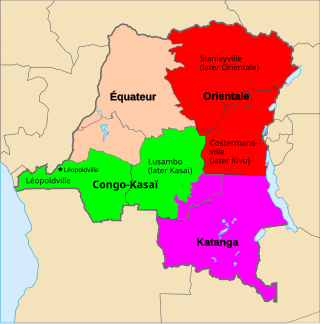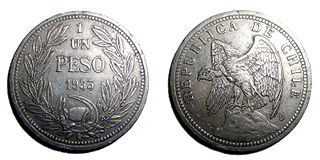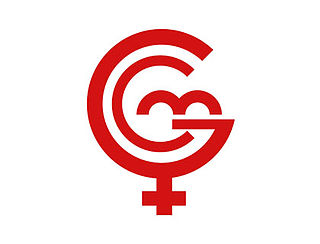External links
This article includes a list of references, related reading, or external links, but its sources remain unclear because it lacks inline citations .(June 2016) |
The World Copper Agreement, signed March 28, 1935, was an agreement by mining companies that attempted to create a worldwide copper cartel. The agreement formally created the International Copper Cartel. Uniting African, South American and European producers, the agreement aimed to "bring about better conditions in the production, distribution and marketing of copper throughout the world outside of the United States" through curtailment of production. To supervise the implementation of the agreement and amend breaches of it, the agreement provided for the creation of a Control Committee of 5 members.
In addition to the above, the Compagnie Francaise de Mines de Bor and the Rio Tinto each had a right to have one representative attend (without vote) all meetings of the Control Committee, and to receive minutes of such meetings and copies of all Committee decisions.
This article includes a list of references, related reading, or external links, but its sources remain unclear because it lacks inline citations .(June 2016) |

Katanga was one of the four large provinces created in the Belgian Congo in 1914. It was one of the eleven provinces of the Democratic Republic of the Congo between 1966 and 2015, when it was split into the Tanganyika, Haut-Lomami, Lualaba, and Haut-Katanga provinces. Between 1971 and 1997, its official name was Shaba Province.

Northern Rhodesia was a British protectorate in Southern Africa, now the independent country of Zambia. It was formed in 1911 by amalgamating the two earlier protectorates of Barotziland-North-Western Rhodesia and North-Eastern Rhodesia. It was initially administered, as were the two earlier protectorates, by the British South Africa Company (BSAC), a chartered company, on behalf of the British Government. From 1924, it was administered by the British Government as a protectorate, under similar conditions to other British-administered protectorates, and the special provisions required when it was administered by BSAC were terminated.

The British South Africa Company was chartered in 1889 following the amalgamation of Cecil Rhodes' Central Search Association and the London-based Exploring Company Ltd, which had originally competed to capitalize on the expected mineral wealth of Mashonaland but united because of common economic interests and to secure British government backing. The company received a Royal Charter modelled on that of the British East India Company. Its first directors included The 2nd Duke of Abercorn, Rhodes himself, and the South African financier Alfred Beit. Rhodes hoped BSAC would promote colonisation and economic exploitation across much of south-central Africa, as part of the "Scramble for Africa". However, his main focus was south of the Zambezi, in Mashonaland and the coastal areas to its east, from which he believed the Portuguese could be removed by payment or force, and in the Transvaal, which he hoped would return to British control.

First Quantum Minerals is a Canadian-based mining and metals company whose principal activities include mineral exploration, development and mining. Its main product is copper, which accounts for 80% of revenues as of 2016.

The nationalization of the Chilean copper industry, commonly described as the Chileanization of copper was the process by which the Chilean government acquired control of the major foreign-owned section of the Chilean copper mining industry. It involved the three huge mines known as 'La Gran Mineria' and three smaller operations. The Chilean-owned smaller copper mines were not affected. The process started under the government of President Carlos Ibáñez del Campo, and culminated during the government of President Salvador Allende, who completed the nationalization. This "act of sovereignty" was the espoused basis for a later international economic boycott, which further isolated Chile from the world economy, worsening the state of political polarization that led to the 1973 Chilean coup d'état.

The Union Minière du Haut-Katanga was a Belgian mining company which controlled and operated the mining industry in the copperbelt region in the modern-day Democratic Republic of the Congo between 1906 and 1966.
Antofagasta plc is a London-based Chilean multinational. It is one of the most important conglomerates of Chile with equity participation in Antofagasta Minerals, the railroad from Antofagasta to Bolivia, Twin Metals in Minnesota and other exploration joint ventures in different parts from the world. Antofagasta is listed on the London Stock Exchange and is a constituent of the FTSE 100 Index.

The Copperbelt is a natural region in Central Africa which sits on the border region between northern Zambia and the southern Democratic Republic of Congo. It is known for copper mining.

La Générale des Carrières et des Mines (Gécamines) is a Congolese commodity trading and mining company headquartered in Lubumbashi, in the Katanga region of the Democratic Republic of Congo. It is a state-controlled corporation founded in 1966 and a successor to the Union Minière du Haut-Katanga. Gecamines is engaged in the exploration, research, exploitation and production of mineral deposits including copper and cobalt.
The varied difficulties experienced by the copper industry after the depths of the Great Depression were followed by the idea of getting relief through some form of collective action in order to reduce the intensity of competition. In this way on March, 28th, 1935, the International Copper Cartel (ICC) was formed. There were five members in the cartel and two friendly foreign observers. The voting members were: Anaconda Copper, Kennecott Copper, Roan Antelope Copper, Rhokana Corporation and the Union Minière du Haut-Katanga, while the non voting members were Bor (Yugoslavia) and Rio Tinto (Spain). Combined, these seven companies accounted for more than half of the global output of refined copper at that time. The main difference between this and the previous copper cartels is that the ICC members did not attempt to set uniform prices. Rather, they merely wanted to influence prices indirectly, smoothing out wide price fluctuations. Despite the immense profits earned by the ICC's members in the following decades, the ICC was never reproached for charging exorbitant prices, as opposed to what happened in the case of previous cartels. Indeed, in Herfindahl’s opinion the cartel did not have any significant effect on price. These are born out in USGS annual price data showing the annual average price of copper in US Dollar per pound, if one adjusts for the US Consumer Price Index.

ZCCM Investments Holdings is a successor company to Zambia Consolidated Copper Mines Limited, of Zambia.
Glencore plc is a Swiss multinational commodity trading and mining company with headquarters in Baar, Switzerland. Glencore's oil and gas head office is in London and its registered office is in Saint Helier, Jersey. The current company was created through a merger of Glencore with Xstrata on 2 May 2013. As of 2015, it ranked tenth in the Fortune Global 500 list of the world's largest companies. In the 2020 Forbes Global 2000, Glencore International was ranked as the 484th-largest public company in the world. As of July 2022, it is the world's largest commodity trader.
This is a history of Katanga Province and the former independent State of Katanga, as well as the history of the region prior to colonization.

Copper is one of the world's most important industrial minerals, and Africa is an important world producer. While output is traditionally dominated by Zambia, South Africa and Katanga Province in the south of the Democratic Republic of the Congo, many African nations contribute to copper production, and many African nations have undeveloped ore resources.

The history of rail transport in Zambia began at the start of the twentieth century.
Copper mining in the Democratic Republic of the Congo mainly takes place in the Copper Belt of the southern Katanga Province of the Democratic Republic of the Congo.

The Dikuluwe Mine is a copper and cobalt mine near to Kolwezi in Lualaba Province of the Democratic Republic of the Congo. Dikuluwe is the westernmost of the Dima Pit group, with Mashamba West and Mashamba East. The quarry was opened in 1975 and was planned to be connected to the nearby Mashamba West pit. The combined Dikuluwe and Mashamba West deposits are now run by La Sino-Congolaise des Mines SA (Sicomines), a joint venture majority owned by a Chinese consortium, with Gécamines holding a minority stake.
Africo Resources was a Canadian mining company whose main property is the copper and cobalt Kalukundi Mine in Katanga Province, Democratic Republic of the Congo. A majority of the company was acquired by Camrose Resources Limited in 2016.
Nikanor plc was a publicly quoted holding company for Global Enterprises Corporate (GEC) with assets in the rich Copperbelt region in Katanga Province, Democratic Republic of the Congo (DRC).

Tanganyika Concessions Limited was a British mining and railway company founded by the Scottish engineer and entrepreneur Robert Williams in 1899. The purpose was to exploit minerals in Northern Rhodesia and in the Congo Free State. Partly-owned subsidiaries included the Union Minière du Haut-Katanga (UMHK), which undertook mining in the Katanga portion of the copperbelt, and the Benguela railway, which provided a rail link across Angola to the Atlantic Ocean. Belgian banks eventually took over control of the company. The Angolan railway concession was returned to the state of Angola in 2001.